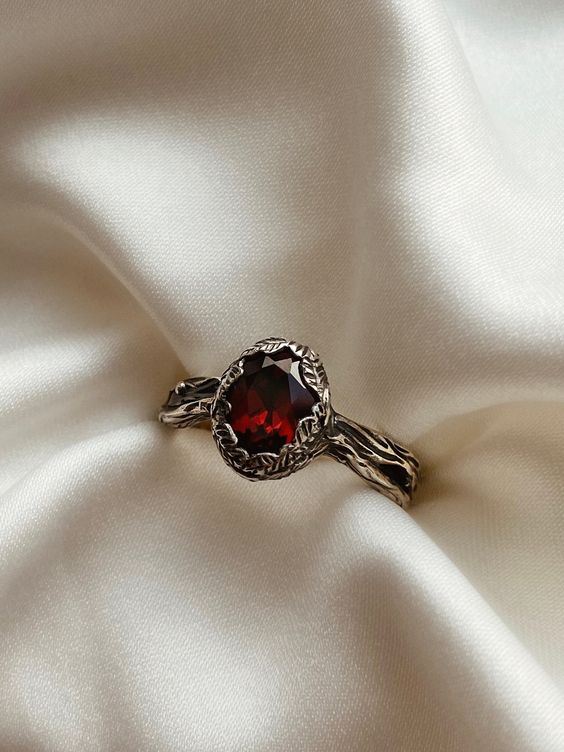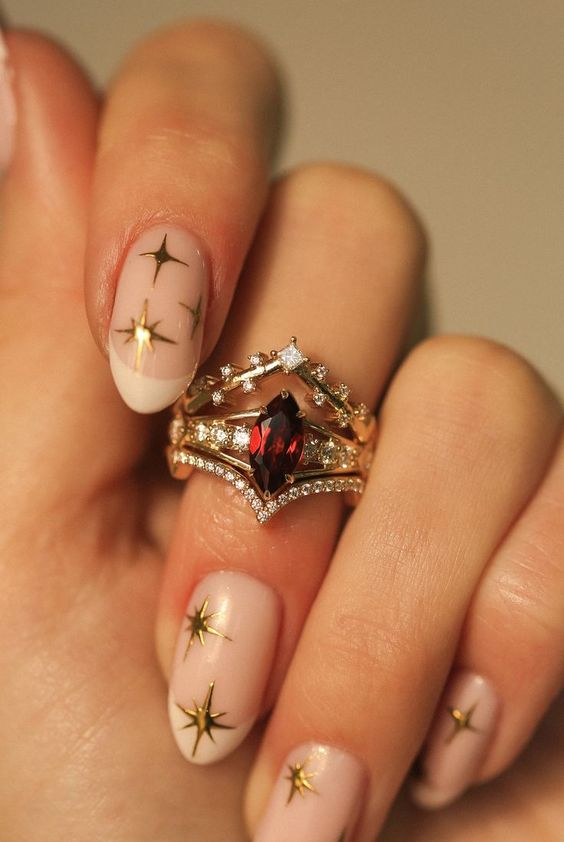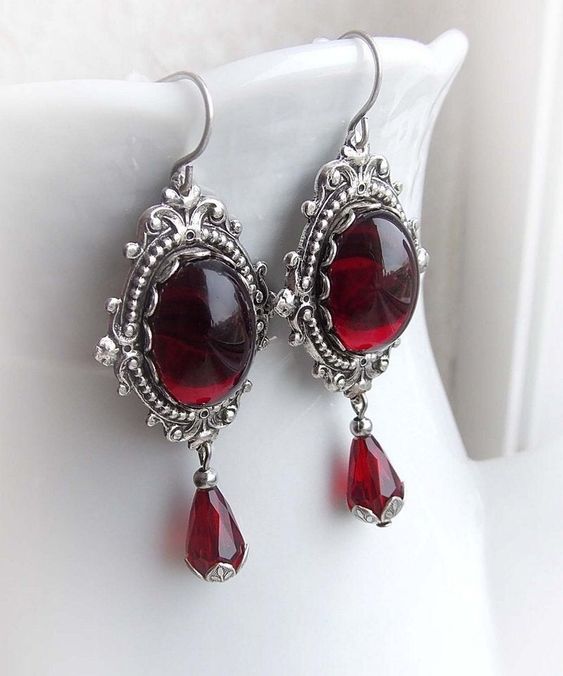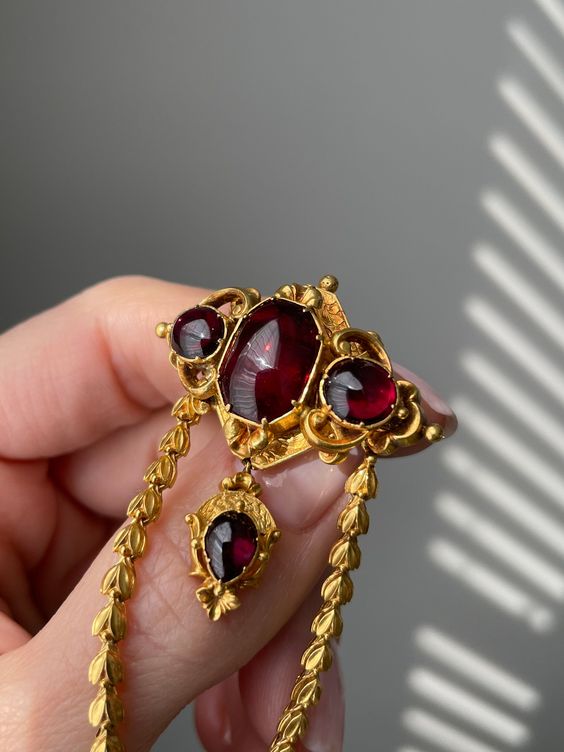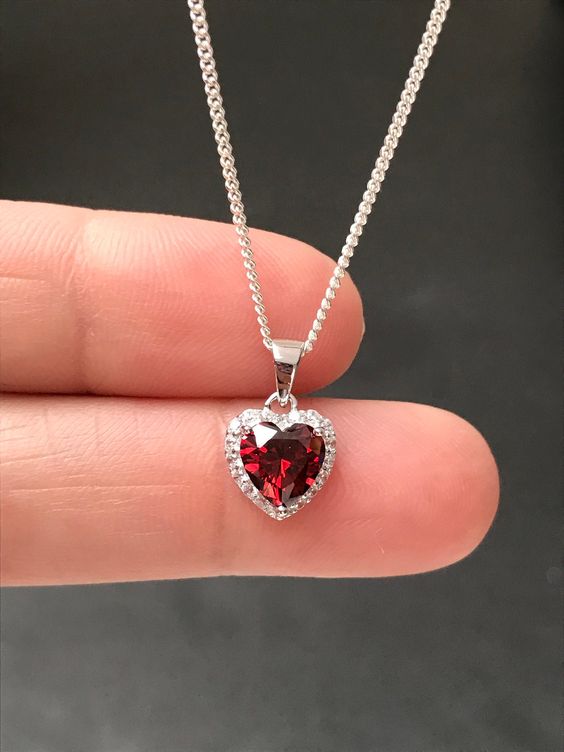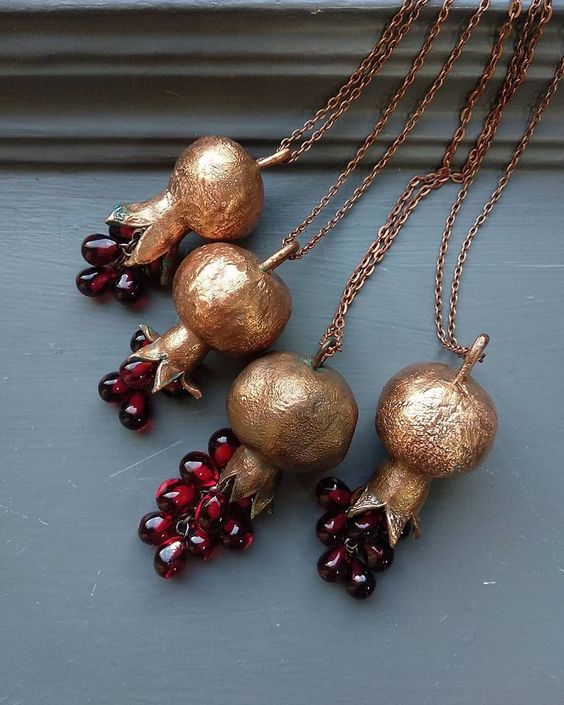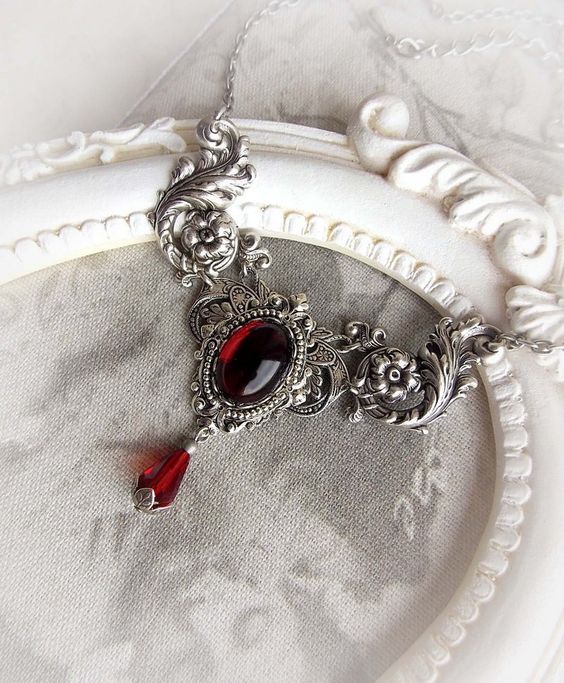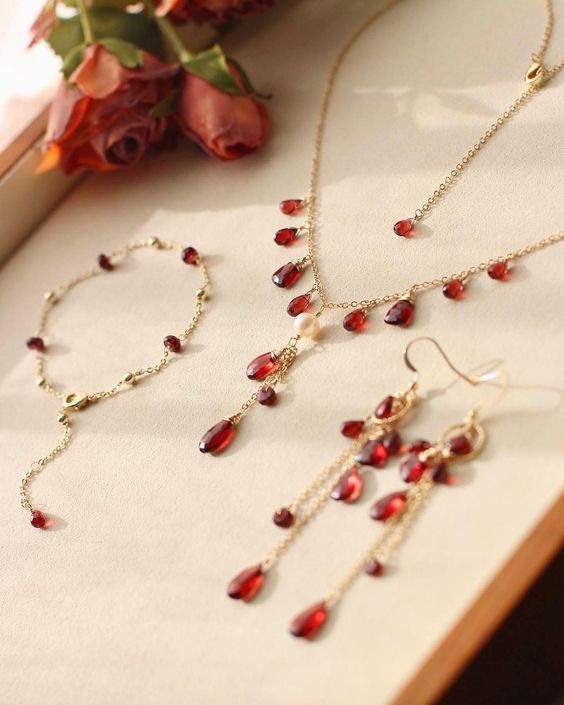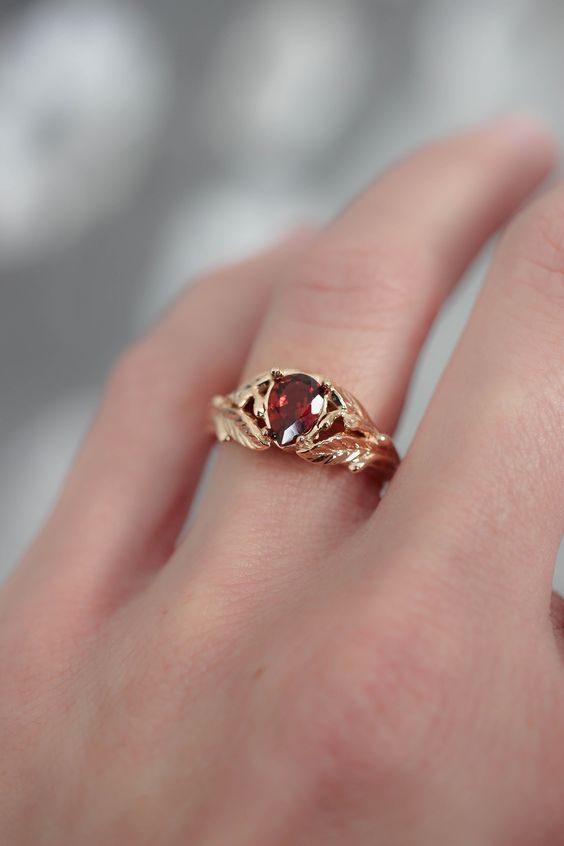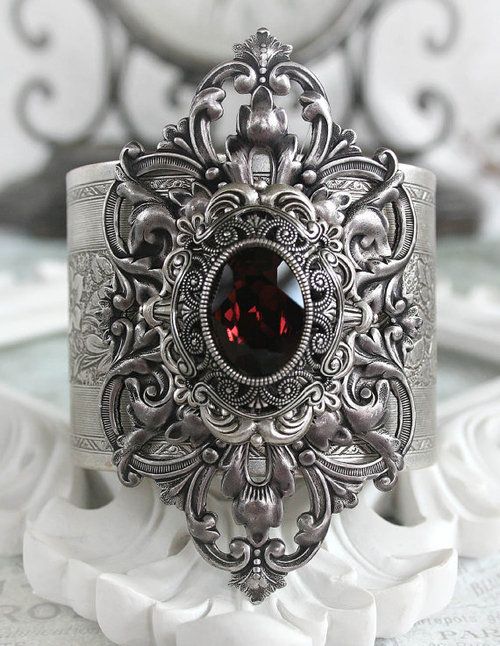Birthstones hold a special place in the realm of gemstones, as they are not only aesthetically beautiful but also carry a unique symbolism and personal connection. These gems have been cherished for centuries as they are believed to reflect the characteristics and personalities of individuals born during specific months.
January birthstone, in particular, has a captivating allure that ties it closely to the hearts of those born in the first month of the year. Read this article and delve into the incredible world of a January birthstone, exploring its history, characteristics, and the meaningful connection it has forged with January-born individuals.
1. Garnet: The January Birthstone
Photo credit: pinterest.com
Garnet often hailed as the January birthstone, is a stunning gem known for its deep, rich colors and remarkable durability. This mineral belongs to a group of silicate minerals and is typically found in various shades of red, though it can also occur in other hues such as green, orange, yellow, and even rare blue varieties.
The name “garnet” is derived from the Latin word “granatus,” which means “seed,” likely a reference to its resemblance to the vibrant red seeds of the pomegranate fruit. Garnets have a high refractive index, making them especially brilliant when cut and polished, and they are treasured for their ability to exhibit a dazzling play of colors under different lighting conditions.
Garnets exhibit a remarkable diversity in colors and varieties. While deep red garnets, known as pyrope garnets, are the most well-known and commonly associated with this birthstone, January individuals are fortunate to have a broad spectrum to choose from. Almandine garnets boost rich red to violet hues, while spessartine garnets dazzle with fiery orange shades. Grossular garnets appear in various colors, including green, yellow, and even translucent.
Lastly, the rare and highly prized blue garnets, known as color-change garnets, exhibit a fascinating ability to shift colors under different lighting conditions, transitioning from blue-green in daylight to purplish-red under incandescent light. This captivating array of colors ensures that garnets are unique January birthstones, offering something for every style and personality.
2. Origins of the Name “Garnet”
Photo credit: pinterest.com
The name “garnet” traces its etymological roots to ancient languages and historical contexts. It has a rich history that sheds light on its unique significance. The word “garnet” is believed to have originated from the Middle English word “gernet,” which means “dark red” and is derived from the Latin word “granatus,” meaning “grain” or “seed.” This reference to seeds is fitting because garnet gemstones often resemble the vibrant red seeds of the pomegranate fruit, owing to their similar color and shape.
The historical roots of the name “garnet” can be traced back to ancient civilizations. In ancient Egypt, garnets were prized gemstones, often used as amulets and burial jewelry. The Egyptians referred to garnets as “the gem of the sun,” reflecting their belief that the gemstone’s radiant red color symbolized the sun’s life-giving warmth.
Similarly, during the Middle Ages, garnets were associated with blood and were thought to possess protective and healing properties, further contributing to the gem’s mystique and association with the name “garnet.” These historical connections have persisted over centuries, adding depth to the name’s significance in the world of gemstones and jewelry.
3. Geological Formation of Garnets
Photo credit: pinterest.com
Garnets form through intricate geological processes. These mineral marvels originate deep within the Earth’s crust and mantle. Garnets are silicate minerals, and their formation begins as pre-existing rock materials undergo metamorphism or igneous activity. Under extreme heat and pressure, minerals like mica, feldspar, and quartz transform into garnets over millions of years.
The geological processes responsible for garnet formation are fascinating. One primary route is regional metamorphism, where rocks deep within the Earth’s crust undergo immense pressure and temperature changes due to tectonic plate movements. This process transforms the minerals present, leading to the crystallization of garnet.
Another way garnets form is in igneous rocks, particularly in certain types of magma rich in aluminum and silica. As the molten rock cools and solidifies, garnet crystals can grow within the newly formed rock. The variety of garnet types and colors we see today results from the specific conditions and elements present during their formation. These unique geological processes contribute to the allure and diversity of garnet gemstones.
More: 10 Incredible Facts About December Birthstone: Zircon, Tanzanite and Turquoise
4. The Mystical Powers of Garnets
Photo credit: pinterest.com
Garnets have long been associated with protective and healing properties. Across cultures and centuries, these deep-red gemstones have been believed to possess mystical powers that shield their wearers from harm. Garnets are thought to ward off negative energies and provide security.
Ancient warriors often carried garnets into battle, believing they would ensure their safe return. Even today, some people wear garnet jewelry as a talisman for protection, seeking comfort in the belief that these gemstones possess a unique ability to guard against adversity. Garnets have found their way into various spiritual practices and rituals throughout history.
In ancient times, they were used by healers and shamans to harness their supposed healing energies. Garnets were believed to aid in purifying the body and spirit, promoting physical and emotional well-being. In some cultures, these gemstones were placed in graves to accompany the deceased on their journey to the afterlife, highlighting their connection to the spiritual realm.
5. Famous Garnet Jewelry
Photo credit: pinterest.com
Throughout history, garnets have adorned some of the most exquisite and renowned jewelry pieces. One notable example is the “Hortensia Diamond” a historic gemstone of French royalty. This extraordinary diamond, now housed in the French Crown Jewels, features a deep red garnet as its centerpiece. Its prominence in this regal setting is a testament to the allure and significance of garnets in high society.
Garnets have played a pivotal role in both historical and modern jewelry design. In ancient times, these gemstones were often used to embellish crowns, signifying power and authority. Their deep red hues were seen as a symbol of love and commitment, making garnets a popular choice for engagement rings.
In contemporary jewelry, garnets continue to captivate designers and wearers alike. Their versatility allows them to be integrated into various styles, from vintage-inspired pieces to modern, minimalist designs, showcasing the timeless appeal of these enchanting gemstones.
6. Historical and Cultural Significance
Photo credit: pinterest.com
Garnets have held a profound significance across various cultures throughout history. In ancient Egypt, these deep red gemstones were associated with the powerful sun god Ra and were believed to offer protection and guidance to the pharaohs. Meanwhile, in ancient Greece, garnets were called “carbuncles” and held a sacred place in their culture. Warriors often wear garnet amulets into battle, believing the gemstone would provide them strength and protection.
One of the most captivating stories of garnets comes from the medieval era when they were believed to possess mystical powers. During the Middle Ages, European royalty and clergy adorned themselves with garnet jewelry for their aesthetic appeal and as symbols of faith and truth. Garnets were also often included in religious relics and artifacts.
In Hindu and Buddhist traditions, garnets were associated with enlightenment and were believed to help guide the souls of the departed to their next journey. These ancient civilizations treasured garnets for their exquisite beauty and the profound spiritual and symbolic meanings they held.
More: 12 Fascinating Facts About November Birthstones: Topaz and Citrine
7. Garnets in Astrology and Birthstone Lore
Photo credit: pinterest.com
The connection between garnets and astrology has been a subject of fascination for centuries. In the realm of zodiac signs, garnets are most closely associated with Capricorn, the earth sign that rules over January. It is believed that garnets possess a unique ability to enhance the characteristics of Capricorn individuals, including their determination, practicality, and loyalty.
As a January birthstone, garnets are thought to amplify the positive traits of those born under this sign, helping them achieve their goals and stay grounded in their pursuits. Beyond their astrological ties, garnets have rich lore and mythology associated with them as January birthstones. One intriguing belief is that garnets bring the wearer good fortune, protection, and health. In ancient times, warriors would carry garnets as talismans for protection in battle.
Additionally, garnets have been linked to themes of love and passion, often symbolizing the deep affection and commitment between partners. This romantic symbolism has made garnets popular for engagement rings and anniversary gifts, symbolizing enduring love and devotion.
Garnets have held unique meanings and significance in various cultures around the world. In Hindu mythology, garnets were thought to be the embodiment of the goddess Maha Kali, symbolizing strength and protection. In medieval Europe, garnets were considered a talisman against evil and were believed to ward off nightmares. Such diverse and enduring beliefs continue to add to the mystique and allure of garnets as January birthstones, making them cherished gemstones for January-born individuals and beyond.
8. Rare and Unique Garnet Varieties
Photo credit: pinterest.com
Garnets, known for their rich red hues, come in a stunning array of colors, and some of the rarest and most unique varieties are highly sought after in the gemstone market. One such variety is the color-changing garnet, which exhibits a mesmerizing transformation from green in daylight to a deep red or purplish-red under incandescent light. This remarkable gemstone, often called an Alexandrite-like garnet, is cherished for its rarity and captivating optical properties. Its value in the market can be quite substantial due to its scarcity and the allure of its color-shifting qualities.
Another exceptional garnet variety is the Tsavorite garnet, celebrated for its intense green color reminiscent of the lush forests of East Africa, where it is primarily sourced. Tsavorite garnets are prized for their vibrant hues and exceptional brilliance. These gems have gained popularity in recent years, and their value continues to be appreciated as collectors and jewelry enthusiasts recognize their uniqueness and scarcity in the market.
In addition to color-changing and Tsavorite garnets, there are also varieties like Mali garnet, which boasts a beautiful yellow-green to greenish-yellow coloration, and the rare and valuable Mandarin garnet, known for its vivid orange hues. These unique garnet varieties, each with distinct characteristics, add diversity and intrigue to the world of gemstones, making them highly desirable among collectors and connoisseurs of fine jewelry.
9. Garnet Mining and Sources
Photo credit: pinterest.com
Garnets, known for their rich, vibrant colors, are mined in several major regions around the world. One of the primary sources of garnets is the African continent, with countries like Madagascar and Tanzania being significant producers of these gemstones. Madagascar, in particular, is renowned for its stunning green demantoid garnets. In Asia, India has been a historic hub for garnet mining, yielding a variety of garnet types, including the famed rhodolite garnets.
Some of the world’s finest almandine garnets can be found in Sri Lanka. In North America, garnets are sourced from locations such as the United States, with Arizona and Idaho being notable sites for pyrope and spessartine garnets, respectively. Other regions like Brazil, Australia, and Russia contribute to the global garnet supply.
Ethical and sustainable sourcing of garnets in the gemstone industry has become a growing concern. The industry has witnessed a shift towards responsible mining practices that prioritize environmental preservation and the well-being of local communities. Initiatives such as the Kimberley Process Certification Scheme aim to prevent the trade of conflict gemstones, ensuring that garnets are not sourced from conflict zones.
Additionally, ethical sourcing involves promoting fair labor practices and using environmentally friendly mining techniques. Some jewelers and gemstone suppliers are actively working towards sourcing garnets from mines that adhere to these ethical and sustainable standards, providing consumers with transparency and assurance regarding the origin of their gemstones.
The demand for ethically sourced garnets has led to the development of supply chain transparency initiatives and certification programs. These efforts aim to trace the journey of garnets from the mine to the market, ensuring that every step adheres to ethical and sustainable standards.
Ethical garnet mining not only preserves the Earth’s resources but also supports the livelihoods of those working in the industry, fostering a more responsible and sustainable gemstone market. As consumers become more conscientious about their purchases, the future of garnet mining lies in the hands of those who prioritize ethical and sustainable sourcing practices.
More: 10 Incredible Facts About October Birthstones: Tourmaline and Opal
10. The Allure of January Birthstones
Photo credit: pinterest.com
Garnets, the dazzling birthstones of January, possess unique qualities that make them an enchanting choice for individuals born in this winter month. Firstly, their rich, deep red hues symbolize warmth and strength, making them an ideal representation of the January spirit.
Furthermore, garnets are known for their durability, a metaphorical reminder of the resilience often associated with those born in January. This gemstone’s ability to exhibit a wide range of colors, from fiery reds to vibrant greens, adds to its allure, appealing to a diverse spectrum of personalities and tastes among January-born individuals.
The enduring charm of garnets as January birthstones lies in their aesthetic appeal and their long history of cultural significance. Garnets have been treasured for their purported mystical properties, believed to provide protection and promote healing for centuries.
This enduring belief in the gem’s powers has contributed to its continued popularity as a birthstone, connecting January-born individuals with a sense of tradition and ancient wisdom. Additionally, garnets have remained a sought-after choice in modern jewelry, seamlessly blending their timeless elegance with contemporary fashion trends.

